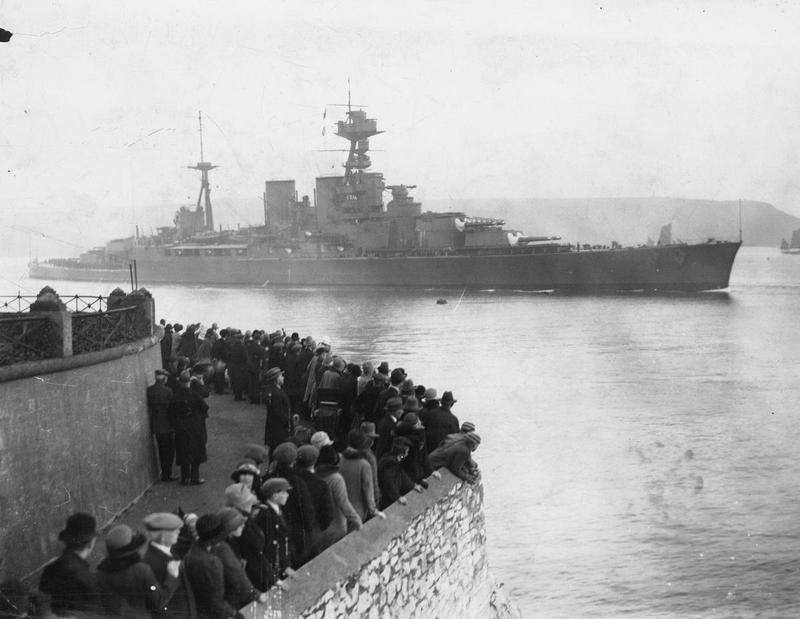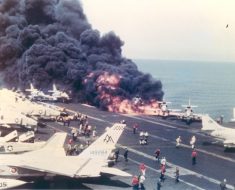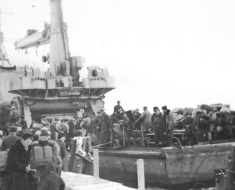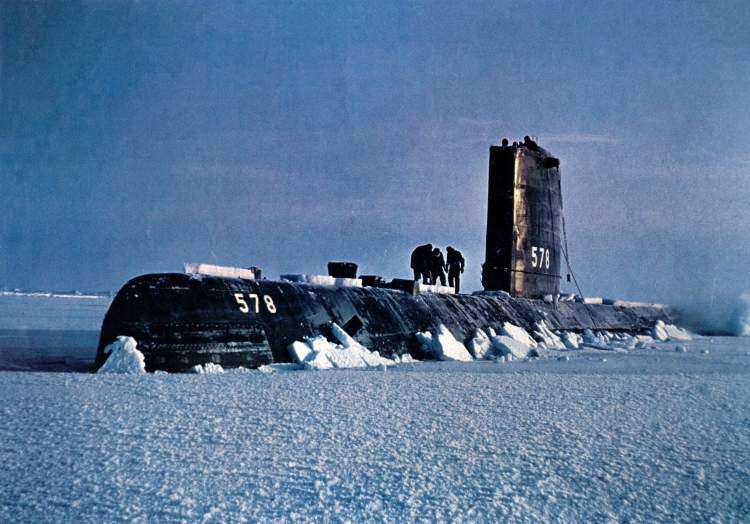The Liberty Ships were a class of cargo vessels built in the United States during World War II, designed for quick and inexpensive construction to address the critical need for transport ships.
These vessels played a vital role in the war effort, transporting troops, food, fuel, and military equipment across the treacherous Atlantic and Pacific Oceans.
Despite their modest design and specifications, the Liberty Ships are celebrated as symbols of American industrial might and the nation’s immense contribution to the Allied victory.
Contents
- Origins Of The Liberty Ships
- Design Of The Liberty Ships
- Production Process
- Role During World War II
- Post-War Legacy
- Liberty Relics
Origins Of The Liberty Ships
In the early stages of World War II, the Battle of the Atlantic raged between the Axis Powers and the Allied Forces.
The main supply routes from North America to Britain were under constant assault from German U-boats, severely threatening the vital flow of troops, ammunition, food, and other essential supplies.
The U-boat offensive proved devastatingly effective, sinking numerous British and American merchant vessels and creating a dire shortage of shipping tonnage.
This maritime crisis led to the development of an emergency fleet program by the United States.
The British had already initiated a similar program and designed a class of simple, austere cargo ships known as ‘Emergency’ ships or ‘Ocean’ class vessels. These ships were specifically designed for ease of construction and operation, but they required improvements to meet the specific demands of the American shipyards and the transatlantic supply routes.

The United States Maritime Commission (USMC) sought to develop an efficient, cost-effective, and quickly produced cargo ship to replace the lost vessels. Working from the British ‘Ocean’ class design, the USMC made several modifications, such as a larger hull and a different steam engine type.
This revised design was classified as the EC2-S-C1 type, but it soon gained a more evocative name – the Liberty Ship.
The name was a nod to the patriotic fervor of the time and symbolized the nation’s collective efforts to safeguard liberty against the Axis powers’ threat.
Read More SS Richard Montgomery – The Time Bomb In The Thames
Henry J. Kaiser, a prominent American industrialist, was instrumental in promoting the construction of these ships. His shipyards, which were known for their efficiency and innovation, set impressive records in Liberty Ship construction.
Thus, the Liberty Ships, born out of urgent wartime necessity, became a shining beacon of American ingenuity, industrial capability, and commitment to the Allied cause.
These vessels would prove instrumental in the titanic struggle that lay ahead, facilitating the flow of vital supplies across the dangerous waters of the Atlantic and beyond.
Design Of The Liberty Ships
The design of the Liberty Ships was guided by practicality and efficiency, eschewing aesthetic considerations or advanced technology. Their primary purpose was to transport as much cargo as quickly as possible, and their design mirrored this need.
Each Liberty ship was about 441 feet long and 57 feet wide, with a draft of around 28 feet when fully loaded.
The ship had five cargo holds: three forward of the engine room and two aft, capable of carrying approximately 10,000 tons of cargo. This cargo could range from tanks and airplanes to food and fuel, depending on the necessities.
The ships were powered by a three cylinder, triple expansion steam engine producing 2,500 hp. It could push the 14,245-ton vessel to a top speed of around 11 knots (approximately 20 kilometers per hour).

Although this speed was modest by naval standards, it was sufficient for the cargo transport role envisaged for these vessels.
In terms of defensive capabilities, the Liberty Ships were modestly armed. They carried a single 4-inch or 5-inch gun mounted on the stern and a variety of anti-aircraft guns, which could include Bofors 40mm and Oerlikon 20mm cannons.
This armament provided a level of protection against both surface and air attacks, although the ships were primarily reliant on naval escorts for defense against submarine threats.
One of the notable innovations in the design of Liberty Ships was the extensive use of welding. Traditionally, ships were riveted, but welding offered a quicker construction method and saved critical resources like steel and labor.
However, this new technique wasn’t without its problems. Cracks developed in some vessels due to brittle fractures, leading to a few catastrophic failures. As a result, measures were taken to improve welding techniques and the quality of ship steel, ultimately leading to safer and stronger ships.
In summary, the design and specifications of the Liberty Ships reflect a balance of speed, economy, and functionality. These vessels were not designed to be glamorous or technologically advanced; they were designed to be workhorses of the sea, transporting essential war cargo across the treacherous waters of war-torn oceans.
Production Process
The production process of the Liberty Ships marked a groundbreaking shift in shipbuilding practices and was a monumental testament to American industrial prowess during World War II.
The ships were not built in the traditional, piece-by-piece shipyard method. Instead, they employed a novel assembly-line process, much like that used in automobile factories.
The construction of a Liberty Ship began with the prefabrication of the ship’s sections. This was done in various facilities, often away from the actual shipyards.
Each section was made up of steel plates and shapes that were welded together to create subsections of the hull or superstructure. These individual sections, some containing parts of the ship’s infrastructure like piping, electrical wiring, or ventilation ducts, were then transported to the shipyard.
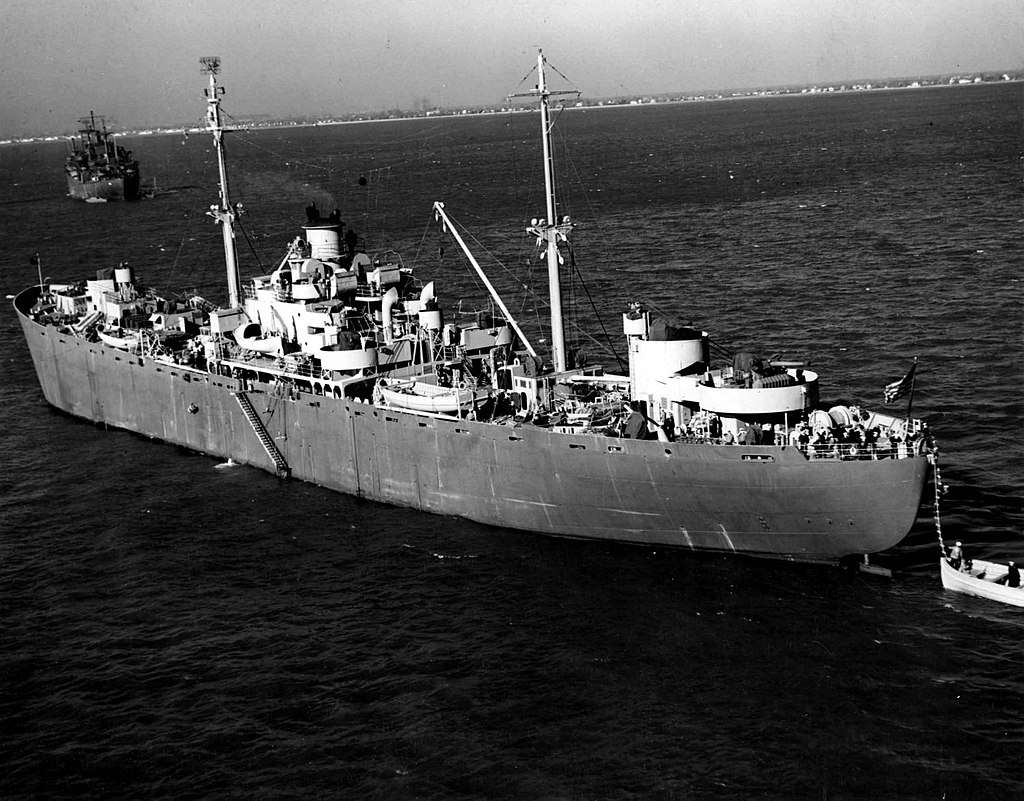
At the shipyard, these prefabricated sections were assembled and welded together in a specific sequence to ensure the ship’s structural integrity. The construction process culminated with the launching of the ship, followed by fitting out where the finishing touches were made, including the installation of machinery, equipment, and furnishings.
This revolutionary method of shipbuilding was exceptionally efficient, drastically reducing the time taken to construct each vessel.
At the peak of the Liberty ship production, shipyards could deliver a completed vessel in less than a week. The record was set by the SS Robert E. Peary, built by the Kaiser Permanente Metals Corporation’s yard in Richmond, California, launched just 4 days, 15 hours, and 30 minutes after the keel was laid.
Role During World War II
The Liberty Ships were the backbone of the Allied maritime supply chain during World War II, proving instrumental in the conflict’s overall strategy and success. With their vast cargo-carrying capacity, these vessels transported all kinds of war materiel, including troops, tanks, airplanes, food, and ammunition.
They sailed across the perilous waters of the Atlantic and Pacific, ensuring the lifeline of the Allied forces remained intact.
Read More U-118 – An Unexpected Visitor to the Shores of Hastings
In the Atlantic, the Liberty Ships were central to maintaining the supply lines between the United States and Britain. They formed the bulk of the transatlantic convoys, bringing in the critical supplies that kept Britain afloat during the darkest days of the war.

Despite facing a significant threat from the German U-boat packs, the sheer number of Liberty Ships proved to be a deciding factor. Though many were sunk, their production outpaced their losses, ensuring that the vital supply lines remained operational.
In the Pacific theater, Liberty Ships transported troops, tanks, aircraft, and other supplies to various fronts, including the critical island-hopping campaign against Japan. They operated under constant threat from Japanese submarines and aircraft, enduring long and dangerous voyages across the vast expanse of the Pacific.
The Liberty Ships also participated in major amphibious operations, such as the D-Day invasion in Normandy and the numerous invasions in the Pacific islands. Although not designed as troop transports or attack transports, many Liberty Ships were adapted to these roles due to their availability and versatility.
Beyond transporting cargo, some Liberty Ships were modified to serve specialized roles. Some became hospital ships, providing medical services to wounded soldiers.
Others were converted into repair ships, capable of performing minor repairs on damaged vessels. A few even served as “barrage balloon” vessels, floating platforms for balloons that deterred low-flying enemy aircraft.
Post-War Legacy
Despite their wartime origins and utilitarian design, the Liberty Ships found various uses in the years following World War II, underlining their versatility and enduring value.
In the immediate aftermath of the war, hundreds of Liberty Ships were used to repatriate American troops from Europe and the Pacific in an operation known as the Magic Carpet.
The onset of the Cold War saw some Liberty Ships pressed back into military service. During the Korean War, they were employed to ferry troops and supplies to the Korean peninsula.
Read More SS Baychimo – The Arctic Ghost Ship
The same was true during the Vietnam War, where Liberty Ships continued to serve as valuable transport vessels.
In the civilian sector, numerous Liberty Ships were sold off and repurposed for a variety of roles. Some were used in cargo transportation, their large cargo holds making them ideal for bulk shipping.
Others were transformed into research vessels or floating laboratories, supporting scientific expeditions and environmental studies.
A few found unique roles, such as the SS John W. Brown and the SS Jeremiah O’Brien, which were converted into museum ships. These vessels serve as floating tributes to the vast fleet of Liberty Ships, allowing future generations to explore their history and understand their significance.
A number of Liberty Ships were placed in the National Defense Reserve Fleet (NDRF), also known as the “Mothball Fleet.” These vessels were preserved in a state of readiness, capable of being reactivated in times of national emergency or war.
Over the decades, however, most of these ships were gradually disposed of, as newer and more efficient ship designs superseded them.
By the late 20th century and early 21st century, most of the Liberty Ships had been scrapped or sunk, their steel bodies reused or returned to the sea. Today, only a handful of these ships remain intact, serving as museum pieces and memorial sites, living testaments to the industrial might and maritime heritage of the United States during World War II.
How many Liberty ships still exist?
Of the three thousand Liberty ships produced, only two are still operational and four more are preserved. In fact, 200 of the Liberty ships were lost in WWII yet only two remained active today. Specifically, the Liberty ships SS Jeremiah O’Brien and the SS John W. Brown still sail regularly.

